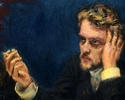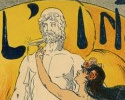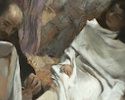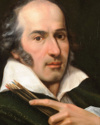X
Please wait for the PDF.
The browser will either open the file, download it, or display a dialog.
The browser will either open the file, download it, or display a dialog.

This article and the associated maps and timeline use Anne Whitney’s letters as the framework for an examination of the art and life of an American artist abroad. It illustrates Whitney’s first sixteen months of travel through these and other contemporary sources to visualize her movement and activities through space and time. This project seeks to revise the impression of Henry James’s ‘white, marmorean flock’ as a collective and look at Whitney as an individual with unique reactions to Italy, informed not only by the celebrated works of art and architecture around her but also by the experience of life abroad in all of its complexity.
The painter Akseli Gallen-Kallela and composer Jean Sibelius enjoyed a complex friendship across media in the final decade of the nineteenth century as members of a group of young artist-intellectuals that called itself “The Symposium.” This paper studies Gallen-Kallela’s images of Sibelius and of his work, centering on the idea of “natural music,” with which the composer was especially closely associated.
In the early years of the Third Republic, medical interns gathered annually at the Bal de l’Internat to celebrate their solidarity and translate their daily struggles with life and death into a festival. Less known is the role artists played in the construction of a medical esprit de corps. This article analyzes the invitations and posters for the ball produced by artists from 1897 to 1911. The sexually-charged content within these images put forward an alternate vision of bourgeois masculinity that reflected certain pressures facing the French medical community and defused anxieties related to depopulation, degeneration, and the male libido.
In his strange and arresting painting Le Pédicure of 1873, Edgar Degas represents his lethargic young niece slumped on a banquette as her toe is ministered to by a balding chiropodist. Commonly interpreted as a representation of luxury and indulgence, this painting is more productively understood through examination of its profoundly troubling and melancholy qualities. Reading the image with an awareness of the ways in which it articulates the nuanced language of family helps us to begin to contemplate, rather than overlook, new aspects of Le Pédicure that are distressingly odd.






